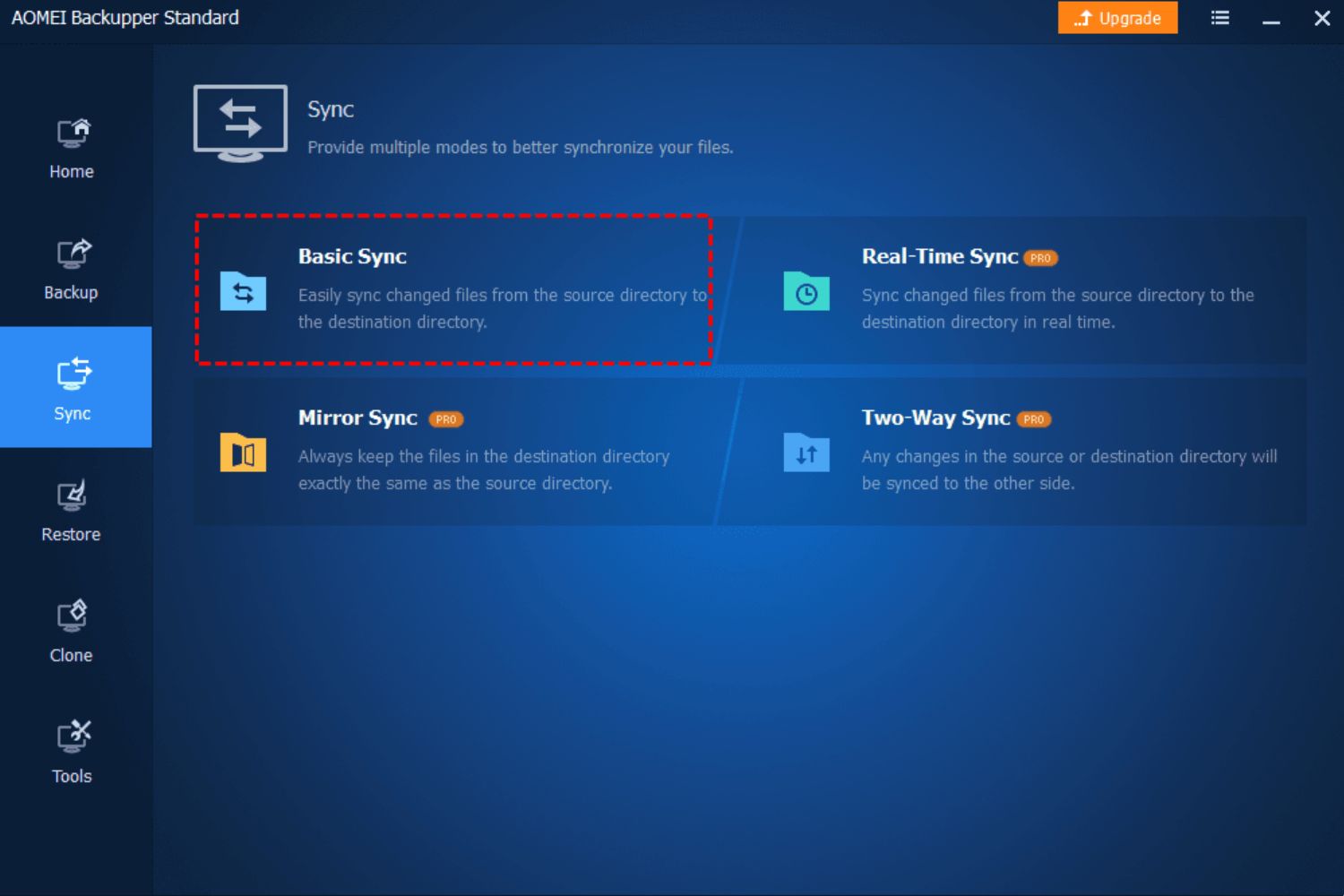Introduction
Welcome to the digital age where our lives are increasingly intertwined with technology. It’s amazing how much our everyday routine relies on our electronic devices. One such device that has become an integral part of our lives is the ultrabook – a sleek and powerful laptop that offers portability and performance.
However, like any technology, ultrabooks have their limitations. One such limitation is the amount of memory they can hold. As ultrabooks prioritize speed and compactness, the available storage space may be limited compared to traditional laptops. This can pose a challenge, especially when it comes to managing large files and folders.
Fortunately, there is a solution that allows you to keep a sync folder without local replication, even with limited memory. Cloud-based sync services have revolutionized the way we store and access our files. By utilizing the power of the cloud, we can keep our files synced across multiple devices without taking up valuable local storage space.
In this article, we will explore the options available for setting up a sync folder without local replication for days on your ultrabook. We will discuss the benefits of using a cloud-based sync service, configuring the service to meet your needs, and the key feature of selective sync. Additionally, we will explore how to keep your sync folder up to date and share some tips for maintaining efficiency with cloud syncing on your ultrabook.
So, if you’re tired of constantly juggling files and limited storage on your ultrabook, read on to discover how you can seamlessly sync and access your files across devices using a cloud-based sync folder.
Understanding the Issue
Before we delve into the solutions, let’s first understand the issue at hand. Ultrabooks are known for their lightweight and slim design, making them perfect for on-the-go use. However, due to their compact size, they often come with limited storage capacity compared to traditional laptops.
This limited storage space can pose a challenge when it comes to managing files and folders, especially for those who work with large media files or need access to a vast amount of data. Constantly deleting files or transferring them to external storage devices can be tedious and time-consuming.
Moreover, when you’re working on a project that requires collaboration, it can be cumbersome to constantly sync files between team members using external drives or sharing platforms. This is where a cloud-based sync folder comes in handy.
A cloud-based sync folder allows you to store your files in the cloud and access them from any device with an internet connection. It not only solves the problem of limited local storage on your ultrabook but also provides the convenience of having your files available at your fingertips, no matter where you are.
By leveraging cloud storage, you can keep your files synced in real-time across devices. Any changes or modifications made to a file in the sync folder will automatically update on all devices connected to the cloud service. This eliminates the need for manual synchronization and ensures that everyone working on a project is always on the same page.
Another advantage of using a cloud-based sync folder is the ability to seamlessly collaborate with others. You can easily share files and folders with colleagues, clients, or friends, and grant them permission to view, edit, or comment on the files. This streamlines the collaboration process and enhances productivity.
Now that we’ve established the issue of limited storage on ultrabooks and the benefits of using a cloud-based sync folder, let’s explore how you can set up and configure a cloud service to meet your needs.
Using a Cloud-Based Sync Folder
Setting up a cloud-based sync folder on your ultrabook is a simple and efficient way to manage your files without local replication. There are several popular cloud services available, such as Dropbox, Google Drive, and OneDrive, that offer seamless syncing across devices. Here’s how you can get started:
- Choose a Cloud Service: Research and choose a cloud service that best suits your needs. Consider factors like storage space, pricing plans, and compatibility with your ultrabook’s operating system.
- Create an Account: Sign up for an account with the cloud service provider. This typically involves providing an email address, creating a password, and agreeing to the terms and conditions.
- Install the App: Download and install the desktop app or mobile app for the cloud service on your ultrabook. This will allow you to easily access and manage your files.
- Sync Your Files: Once the app is installed, you can start syncing your files to the cloud. This process may vary depending on the cloud service, but typically involves dragging and dropping files into the designated sync folder.
- Wait for Syncing: The initial syncing process may take some time, especially if you have a large amount of data. Be patient and let the cloud service complete the synchronization.
- Access Files Across Devices: Once your files are synced to the cloud, you can access them from any device connected to your account. This includes your ultrabook, smartphone, or tablet.
By using a cloud-based sync folder, you can now access your files on your ultrabook without taking up precious local storage. Any changes made to the files on one device will automatically sync to all other devices connected to your cloud service.
Furthermore, most cloud services offer offline access to your files. This means that even if you don’t have an internet connection, you can still access and modify your files stored in the cloud. Any changes made while offline will sync the next time you connect to the internet.
Now that you have set up your cloud-based sync folder, it’s important to configure the cloud service to optimize its performance according to your preferences. In the next section, we will explore the key features and configuration options that will help you make the most out of your cloud sync experience on your ultrabook.
Configuring Your Cloud Service
Once you have set up your cloud-based sync folder, it’s time to configure your cloud service to suit your specific needs. By customizing the settings, you can optimize the performance and functionality of the cloud service on your ultrabook. Here are some key configuration options to consider:
- Selective Sync: One of the most important features offered by cloud services is selective sync. This allows you to choose which files and folders you want to sync to your ultrabook. By selectively syncing only the necessary files, you can save valuable local storage space and avoid unnecessary clutter on your device.
- Automatic Syncing: Decide whether you want your files to sync automatically or manually. Automatic syncing ensures that any changes made to files in the cloud or on your ultrabook are instantly updated across all devices. Manual syncing, on the other hand, gives you more control over when and how files are synced.
- Bandwidth Limitations: Some cloud services allow you to set bandwidth limitations for syncing. This can be useful if you have limited internet bandwidth or want to prioritize other internet activities while syncing your files.
- Sharing and Collaboration Settings: Adjust the sharing and collaboration settings according to your preferences. Decide who can access and edit your files shared through the cloud service. Set permissions and restrictions to ensure the security and privacy of your data.
- Notifications and Alerts: Customize the notification settings to receive updates and alerts regarding file changes, shared folder invitations, and other important events related to your cloud service.
By configuring these settings, you can tailor your cloud service to match your workflow and maximize efficiency on your ultrabook. Take some time to explore the options and adjust them based on your specific requirements.
It’s worth noting that the configuration options and availability may vary depending on the cloud service provider. Some services may offer additional features, such as version control, file recovery, and advanced security options. Familiarize yourself with the documentation or help center provided by your chosen cloud service to learn more about the available configuration options.
Now that you have configured your cloud service to your liking, let’s explore the key feature of selective sync and how it can further enhance your cloud syncing experience on your ultrabook.
Selective Sync: A Key Feature
One of the most important features offered by cloud services is selective sync. It allows you to choose which files and folders you want to sync to your ultrabook, giving you control over the usage of your local storage space.
When you enable selective sync, the cloud service will display a list of all files and folders available in your cloud storage. From this list, you can select the specific files and folders that you want to sync to your ultrabook. Any files or folders that are not selected will not be downloaded or stored locally on your device.
This feature is especially useful when you have limited storage space on your ultrabook. Instead of syncing your entire cloud storage, you can choose to sync only the files you need for immediate access. This ensures that your important files are readily available on your device, while other less frequently used files remain in the cloud, saving local storage space.
Selective sync also allows you to free up storage on your ultrabook by removing files that you no longer need to have locally. When you delete a file from the selectively synced folder on your ultrabook, it will be removed from your device but remain in the cloud storage. You can still access the file online or on other devices connected to the cloud service.
Additionally, selective sync gives you the flexibility to work with large files or folders that are too large to fit on your ultrabook’s limited storage. You can choose to simply access these files online as needed, without syncing and taking up local storage space.
It’s important to regularly review the files and folders you have selected for sync and make adjustments based on your current needs. If your storage space becomes limited, consider deselecting files that you don’t require immediate access to or that can be easily downloaded when needed.
To enable selective sync, access the settings of your cloud service’s app on your ultrabook. Look for the selective sync option and configure it according to your preferences. Remember to periodically review and update your selective sync settings to optimize your local storage usage.
Now that you understand the key feature of selective sync, let’s learn how you can sync files on demand, further enhancing the efficiency of your cloud syncing on your ultrabook.
Syncing Files on Demand
Syncing files on demand is a convenient feature offered by some cloud services that allows you to access files from your cloud storage without having to sync them to your ultrabook’s local storage. This feature is particularly useful when you have limited storage space on your device.
When you enable the files on demand feature, the cloud service will display placeholders or icons for files and folders in your sync folder on your ultrabook. These placeholders indicate that the files are stored in the cloud and not taking up space on your local storage.
When you need to access a file that is not yet synced to your device, simply double-click on the file placeholder, and the cloud service will download and sync the file on-demand for you to use. Once you’re done with the file, the cloud service will automatically remove the locally synced copy, freeing up storage space.
This feature allows you to save storage space on your ultrabook by only syncing the files you actively need while still having access to the rest of your cloud storage. Whether you’re working on a large project or need access to a vast library of files, you can easily and efficiently navigate and retrieve the files you require on-demand.
Syncing files on demand also comes in handy when you have a slow or limited internet connection. Instead of waiting for large files to download and sync, you can quickly access and work with them as needed, reducing the waiting time.
It’s important to note that not all cloud services offer the files on demand feature, so be sure to check if your chosen service supports it. Additionally, the steps to enable and use this feature may vary between different cloud services. Refer to the documentation or help center provided by your specific cloud service for instructions on how to enable and use files on demand.
By leveraging the syncing files on demand feature, you can efficiently manage your cloud storage and optimize the usage of local storage on your ultrabook. It provides a seamless and convenient way to have access to all your files while keeping your storage space free for other important data.
Now that you’re familiar with syncing files on demand, let’s explore some tips for keeping your sync folder up to date and ensuring a smooth and efficient syncing experience on your ultrabook.
Keeping Your Sync Folder Up to Date
Once you have set up your cloud-based sync folder on your ultrabook, it’s essential to keep it up to date to ensure that your files are consistently synced and accessible. Here are some tips to help you maintain an up-to-date sync folder:
- Enable Automatic Sync: Most cloud services offer the option to enable automatic syncing. By enabling this feature, any changes made to files in the sync folder will be automatically reflected in the cloud and across all connected devices. Make sure you have this setting enabled to ensure that your files are always up to date.
- Regularly Connect to the Internet: To ensure that your files sync seamlessly, make sure your ultrabook is connected to the internet regularly. Syncing can only occur when there is an active internet connection, so try to connect your device whenever possible to keep your files up to date.
- Schedule Syncing: Some cloud services allow you to schedule syncing at specific times or intervals. Take advantage of this feature by setting a regular sync schedule that aligns with your usage patterns. This way, you can ensure that your files are synced without disrupting your workflow.
- Check for Sync Errors: Periodically check your cloud service app or account for any sync errors or conflicts. Sometimes, files may fail to sync due to various reasons, such as network issues or file permissions. Address any sync errors promptly to avoid any data loss or inconsistencies in your sync folder.
- Monitor Storage Space: Keep an eye on your ultrabook’s storage space to prevent it from becoming full. If you notice that your storage is running low, consider reviewing your selective sync settings or offloading less frequently used files to the cloud to free up space.
- Regularly Review and Clean Up: Set aside time to review and clean up your sync folder. Delete any unnecessary files or folders that are no longer needed to prevent clutter and optimize storage space. However, exercise caution when deleting files as they may be shared or have dependencies in other projects.
By following these tips, you can ensure that your sync folder on your ultrabook remains up to date, providing you with seamless access to your files and eliminating any potential syncing issues.
It’s also worth mentioning that maintaining a consistent and stable internet connection is crucial for smooth syncing. Ensure a reliable connection to avoid any interruptions or delays in the syncing process.
Now that you have learned how to keep your sync folder up to date, let’s explore some additional tips and considerations to enhance the efficiency of cloud syncing on your ultrabook.
Maintaining Efficiency with Cloud Syncing
To make the most out of cloud syncing on your ultrabook and ensure optimal efficiency, here are some additional tips and considerations:
- Organize Files and Folders: Maintain a well-organized file and folder structure in your sync folder to easily locate and access your files. Utilize subfolders and naming conventions to categorize and label your files properly.
- Use File Versioning: Take advantage of file versioning features offered by some cloud services. This allows you to keep track of different versions of a file, enabling easy retrieval or restoration of previous versions if needed.
- Consider Shared Folders: If you collaborate with a team or clients, consider creating shared folders within your cloud service. This allows for seamless collaboration and ensures that all team members have access to the latest versions of shared files.
- Regularly Backup Files: While cloud syncing provides a level of data protection, it’s always a good practice to have an additional backup of important files. Consider creating periodic backups of critical files either to an external hard drive or another cloud storage service.
- Encrypt Sensitive Files: If you have sensitive files stored in your sync folder, consider encrypting them for an extra layer of security. Many cloud services offer encryption options, or you can encrypt files using third-party encryption software before uploading them to the cloud.
- Be Mindful of Storage Limits: Keep an eye on your cloud service’s storage limits, especially if you’re using a free or limited-tier plan. Regularly review your files and consider archiving or deleting unnecessary files to stay within your storage limit.
- Ensure Strong Passwords: Protect your cloud service account by using strong, unique passwords and enabling two-factor authentication. This helps safeguard your files and prevents unauthorized access to your cloud storage.
- Stay Updated: Keep your cloud service app and your ultrabook’s operating system up to date. Regular updates often include bug fixes, security enhancements, and performance improvements that can enhance your cloud syncing experience.
By following these tips, you can maintain efficiency and maximize the benefits of cloud syncing on your ultrabook. Cloud syncing can streamline your workflow, boost collaboration, and provide easy access to your files whenever and wherever you need them.
Remember to regularly review and assess your cloud syncing practices to ensure they align with your evolving needs and preferences. Experiment with different features and settings offered by your cloud service to discover the configurations that work best for you.
Now that you’re armed with these tips and considerations, you’re well on your way to mastering cloud syncing on your ultrabook.
Additional Tips and Considerations
As you dive deeper into the realm of cloud syncing on your ultrabook, here are some additional tips and considerations to keep in mind:
- Internet Speed: For seamless syncing, ensure you have a stable and high-speed internet connection. A slow or unreliable connection may result in delays or difficulties in syncing your files.
- File Permissions: When sharing files with others through your cloud service, double-check the file permissions to ensure that you’ve granted the appropriate level of access to each individual or group.
- Offline Access: Some cloud services allow you to mark certain files or folders for offline access. This feature is especially useful when you’re in an area with limited or no internet connectivity.
- Public vs. Private Links: Be cautious when sharing files or folders publicly. Double-check the sharing settings to prevent unauthorized access to sensitive information.
- Consider Bandwidth Limitations: If you have a limited internet plan or need to conserve bandwidth for other activities, adjust the bandwidth limitations within your cloud service’s settings to optimize your usage.
- Explore Integration Options: Many cloud services offer integration with other apps and services. Explore these integrations to enhance your workflow and streamline tasks such as document editing, project management, and file backups.
- Mobile Syncing: Take advantage of the mobile app provided by your cloud service to access and sync files on the go. This allows you to stay productive even when you’re away from your ultrabook.
- Regularly Check for Updates: Keep your cloud service app and ultrabook’s operating system up to date to benefit from the latest features, bug fixes, and security patches.
- Data Limitations: Be mindful of any data limitations imposed by your internet service provider. Uploading and syncing large files can consume a significant amount of data, so plan accordingly.
- Data Security: While cloud services take precautions to protect your data, it’s essential to understand their security practices and consider encrypting sensitive files for an added layer of protection.
By considering these tips and taking advantage of the features and capabilities of your chosen cloud service, you can optimize your cloud syncing experience and make the most of the resources at your disposal.
Remember, it’s important to regularly review and adapt your cloud syncing practices to cater to your evolving needs and priorities. Stay informed about new features and possibilities within your cloud service and explore how they can further enhance your workflow and productivity.
Now armed with these additional tips and considerations, you’re well-equipped to navigate the world of cloud syncing on your ultrabook with confidence.
Conclusion
Congratulations! You have now learned how to overcome the challenge of limited storage on your ultrabook by utilizing a cloud-based sync folder. By leveraging the power of the cloud, you can seamlessly sync and access your files across devices without the need for local replication.
We started by understanding the limitations of ultrabooks in terms of storage space and the need for efficient file management. Then, we explored the benefits of using a cloud-based sync folder, such as seamless collaboration, accessibility, and the ability to prioritize storage on your device.
We discussed how to set up and configure your cloud service to meet your specific needs, from selecting a cloud service provider to enabling key features like selective sync and syncing files on demand. We also provided tips for keeping your sync folder up to date, maintaining efficiency, and ensuring data security.
Remember to stay organized, regularly review your sync folder, and take advantage of features like file versioning, encryption, and integration to enhance your cloud syncing experience. And of course, always be mindful of data limitations, security practices, and the importance of a stable and high-speed internet connection.
Now, armed with the knowledge and insights gained from this article, you can confidently manage your files and enjoy the convenience of seamless syncing on your ultrabook. Embrace the power of the cloud and unlock the full potential of your device with a cloud-based sync folder.
So, go ahead and make the most of your ultrabook’s capabilities by harnessing the efficiency and flexibility of cloud syncing. Stay organized, collaborate effortlessly, and access your files from anywhere. With a well-configured cloud service and the right syncing practices, you can enjoy a seamless and productive digital experience.
Happy syncing!

























